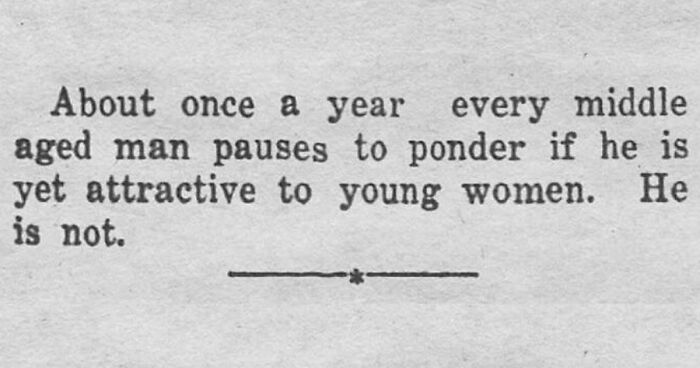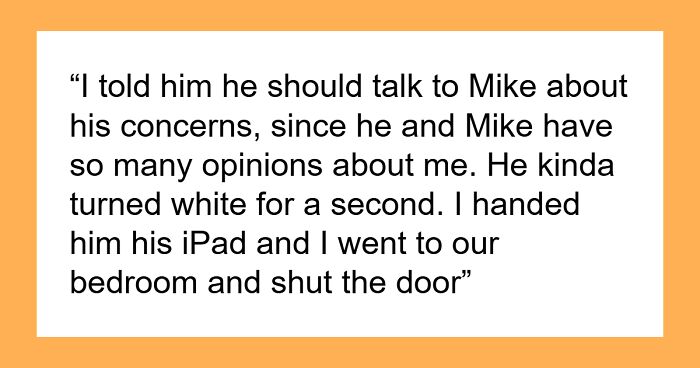The strong friendship between humans and dogs makes us wonder what dogs think, especially about life’s final moments. It’s common to ask if dogs know when they are about to die. This question lets us explore dogs’ feelings and also touches our hearts.
Dogs may act less lively, eat less, or act differently with their buddies as death nears, possibly showing they feel something is wrong. But, understanding how much dogs grasp the idea of death remains a soft mystery.
- Dogs may sense when they're dying but don't fully grasp death as humans do.
- Only 21% of a study participants think dogs are aware of their impending death.
- Dogs and humans differ significantly in their awareness and reaction to death.
- Behavioral changes can indicate a dog's discomfort and possibly approach of death.
- Providing comfort and care for dying dogs is essential for their peace and well-being.
In this article, we’ll dig into what experts and studies reveal about this sad yet crucial topic. We’ll also discuss how pet owners can face this hard time with care and understanding – making their furry pal’s life good even as it approaches the end.
This post may include affiliate links.
The information provided herein is for informational purposes only. Please refer to our disclaimer for more details..
- Understanding Dog’s Awareness of Death
- What Experts Say About Dogs Understanding Death
- Comparing Death Awareness: Dogs and Humans
- Signs A Dog Is Dying
- The Dog’s Impending Death: Analyzing Sense and Sensations
- Helping Your Dog Through the End of Life
- Conclusion: Do Dogs Know When They Are Dying?
- Frequently Asked Questions
Understanding Dog’s Awareness of Death
The thought of death, as humans see it, requires a level of thinking that we don’t fully know if animals have. The whole idea of life ending might be too much for a dog’s mind. Yet, stories and watching how dogs act suggest that dogs might show signs that they have a basic sense of death or dying.
How Dogs See Death
Image credits: Dominik QN.
Dogs might not get the idea of death as humans do, but they can notice changes around them and in other beings, whether humans or animals. When a buddy (human or animal) dies, dogs might act upset or different, showing they know their friend is gone.
How much dogs really understand about death being final is still a big question. Some guess that dogs might get death on a simpler level—like noticing a friend isn’t around anymore.
What Experts Say About Dogs Understanding Death
Experts have different thoughts on whether dogs know something about death. There isn’t clear science on dogs getting death, but some experts think dogs might sense something, especially when a close buddy is sick or dies. People and dog owners think differently about this. In a small study by Marc Bekoff, Ph.D., the findings were:
- 21% feel a dying dog knows what’s happening.
- 58% aren’t sure.
- 21% think dogs don’t know they are dying.
Comparing Death Awareness: Dogs and Humans
Exploring how dogs and humans see death is quite interesting and shows how thinking and feelings change across different beings. Below is a table comparing how dogs and humans react to death:
| Aspect | Dogs | Humans |
|---|---|---|
| Cognitive Ability | Basic, instinct-driven response. | Complex understanding of death. |
| Reaction to Death | React to the absence or illness of a companion without comprehending death’s permanence. | Emotional, philosophical, and existential comprehension. |
| Behavioral Indicators | Changes in behavior due to environmental shifts. | Varied emotional and behavioral responses based on comprehension of death. |
This comparison shows a big difference in how dogs and humans react to death – showing the complexity of understanding death across different beings.
Signs A Dog Is Dying
It’s really sad to grieve our furry friends near the end of their time. Yet, it’s key to notice signs that your dog might be dying to give them all the love and comfort they need in their last days.
It’s important to say that these signs could also mean other health problems. So, talking to a veterinarian is really important to get the proper care.

Changes in Behavior: What to Look For
You can tell a lot about your dog’s health by how they act. Some changes you might see are:
- Depression
- Confusion
- Agitation
- Restlessness
- Anxiety
- Increased clinginess
- Isolation or detachment from human or animal companions
- Loss of interest in social interaction, activities, or toys
- Aggression is often due to chronic or persistent pain or possibly a brain tumor.
These signs can help you understand how your dog is feeling and show when it’s time to get vet help or make your furry buddy comfortable as they near the end.
Image credits: Nathan Hanna.
Physical Signs Your Dog is Nearing End of Life
Physical signs are often easier to see and can really affect how your dog feels. Here are some signs to watch for:
Heart Trouble: Dogs with heart issues may cough because their heart gets bigger and feel weak due to bad blood flow and anemia.
Breathing Changes: Panting even while resting, coughing, or having a hard time breathing could mean lung problems.
Eating and Drinking Less: Your dog might eat and drink less as their body starts to shut down. They might also feel sick or have stomach trouble.
Moving Less: Due to pain, muscle loss, tiredness, or weakness.
Weight Loss: From not eating or losing a lot of muscle because of sickness.
Can’t Control Pee or Poop: They can’t get up to go outside or have trouble holding it in due to body and nerve problems.
Telltale Signs Your Dog Is Saying Goodbye
Some people say they see small or emotional signs that their dog is saying goodbye, although these signs can be misunderstood easily. Some dogs might want more comfort from humans or act tired and eat less. It’s really important to be kind with these signs and not jump to conclusions without talking to a vet.
The Dog’s Impending Death: Analyzing Sense and Sensations
When dogs get closer to the end of their journey, they might feel changes in their senses. These changes can really change how they react to the world and to their human pals. Knowing these changes helps owners give good care and love to their old furry buddies.
What Dogs Feel as They Age
Image credits: Brett Jordan.
As dogs get old, they might not see, hear, or smell as well due to getting older and sometimes sicknesses like diabetes or cancer. These changes can show up at different times as dogs age, often starting around age seven, when many dogs are seen as seniors. The changes might include:
- Seeing Differently: Dogs might trip more and find new places hard to get used to because they can’t see as well.
- Less Hearing: Dogs might seem like they aren’t listening or might not come to say hi when you come home.
- Smelling Changes: If dogs show less interest in food, it might be because they can’t smell as well.
These changes in senses might be small and easy to miss but often show a dog is getting old or has health problems.
How Dogs Communicate Their Pain and Discomfort
As dogs’ sensory capabilities diminish, they may exhibit certain canine behaviors to communicate their discomfort or pain. It’s crucial for dog owners to recognize these signs to ensure their pets receive the necessary care and attention:
- Unprovoked aggression or irritability: These might indicate chronic or persistent pain.
- Restlessness, hiding, or avoiding others: These behaviors can signal discomfort or distress.
- Excessive panting, shaking, or trembling: Often signs of pain or anxiety.
- Muscle spasms and twitching: These are also common signs of pain in dogs.
A dog’s ability to communicate pain or discomfort may also be affected by sensory decline. For instance, a dog with hearing loss might not respond to verbal cues from its owner, while a dog with vision loss might become more startled or reactive due to its impaired sight.
Understanding the sensory changes and the ways dogs communicate their discomfort can significantly help in providing them with a comfortable and supportive environment as they near the end of life.
Observing your dog, acknowledging the sensory changes they are undergoing, and adjusting their environment and care routine accordingly can significantly improve their quality of life during their golden years.
Helping Your Dog Through the End of Life
Image credits: Helena Lopes.
Helping your dog as they near the end of their life means giving medical care, emotional support, and, sometimes, different treatments. Here’s how you can help:
Care to Ease Pain: Services like palliative and hospice care help manage pain and keep your dog comfy with medicines, food plans, and spending time together. Treatments like acupuncture might also help.
Loving End-of-Life Care: Giving love, support, and the right care can make this time easier for you and your dog. This means understanding what happens as dogs die and giving comfort during tough times.
Comfort Remedies: Remedies like Arsenicum album 30C might help with restlessness or fear, but always talk to a vet before trying new treatments.
Preparing for Euthanasia: If choosing euthanasia, prepare by discussing calming medicines, bringing your dog’s favorite things, and picking a quiet time for the appointment to help with a peaceful goodbye.
This journey towards your dog’s end is a hard and emotional time. It needs a mix of strong feelings, making smart choices, and kind care to make sure your dog is comfy and peaceful in their last days.
Conclusion: Do Dogs Know When They Are Dying?
The friendship between humans and dogs is filled with deep love and respect. When a dog’s life is nearing its sunset, it’s our job to give them the best care, understanding, and kindness.
Even if we might never fully know how dogs see death, we can make sure their last times are peaceful and comfy. Enjoy every moment, believe in your choices, and remember – the love you shared will always live on in both your hearts.
Frequently Asked Questions
How do dogs act when they know they are dying?
When dogs sense their end is near, they might show different behaviors and physical changes. These could include having less energy, not eating much, grooming less, throwing up, having diarrhea or feeling sick, changing their sleep pattern, and liking to be alone more.
Some dogs may want to be near you a lot, while others might lose weight, feel tired, eat less, lose control of pee or poop, or even have serious issues like going into shock or coma.
Do dogs get scared when they know they’re dying?
It’s hard to know exactly what dogs feel as they near the end of their life. The way they act might show discomfort, worry, or fear, but understanding animal feelings, especially during such a tough time, is not easy. Some dogs might want more love and become ‘clingy,’ which could mean they feel anxious or scared.
Do dogs try to leave before they die?
There are stories of dogs moving away or finding quiet places when they feel the end is near. This might be a way for dogs to find peace or comfort as they go through the changes of dying.
Will a vet tell you when it’s time to put your dog down?
Vets can give really good advice based on how your dog’s health and life quality are to help pet owners decide about euthanasia. They can talk about how diseases might get worse, what life quality to expect, and explain the process of euthanasia.
But in the end, the choice is up to the pet owner, even though vets can advise on when it might be the right time based on what they see and know professionally.
377views
Share on Facebook
 Dark Mode
Dark Mode 

 No fees, cancel anytime
No fees, cancel anytime 






















































8
0